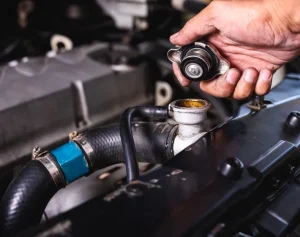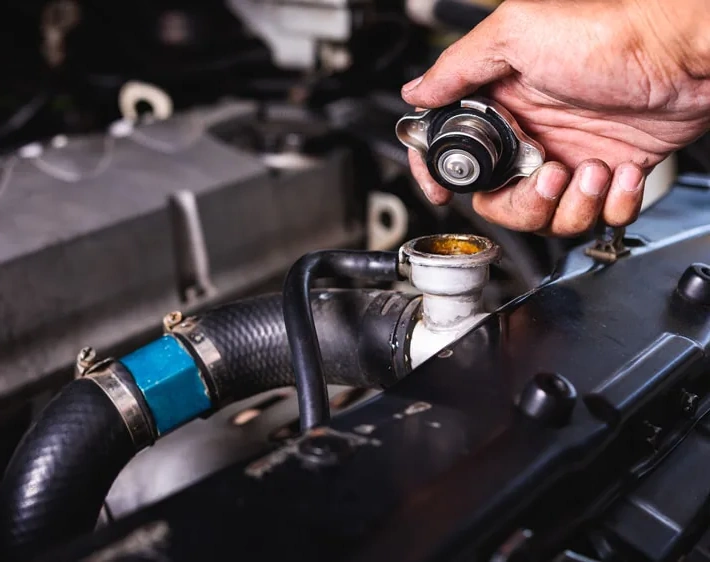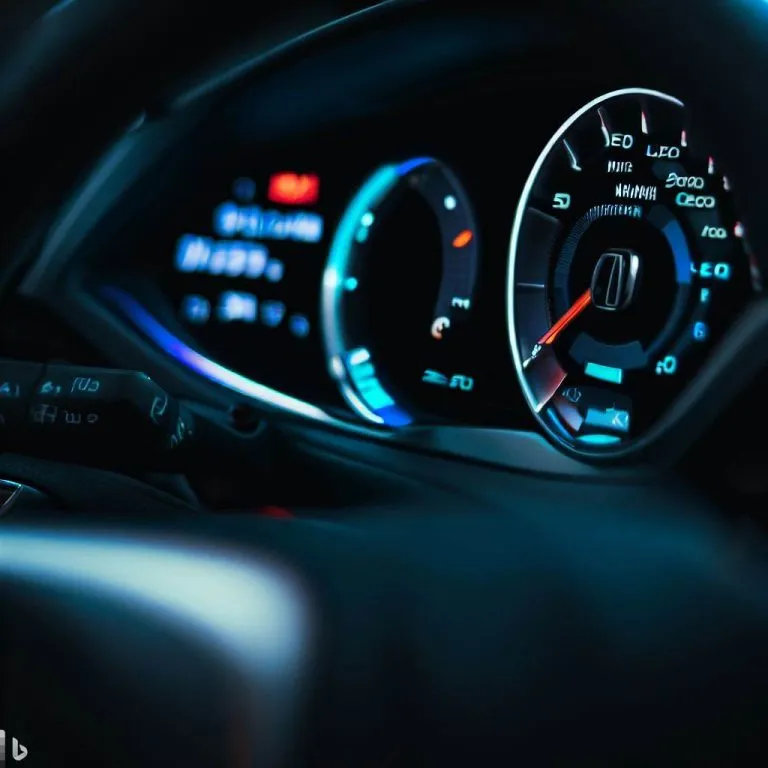Can low coolant cause rough idle?
Low coolant level and rough idle…time to worry?
Low coolant can cause rough idle, depending on the engine type. If you are driving a car with an air-cooled engine and the coolant level drops below a certain point, it could cause your vehicle to overheat. This can damage your engine and lead to severe problems like overheating or a fire.
If you have an air-cooled engine, it is essential to check the coolant level regularly and top it off when necessary. This is especially true if you live in an area with harsh winters where temperatures drop below freezing frequently.
Coolant and its role in a vehicle:
Coolant plays a crucial role in keeping your vehicle’s engine cool. It also helps with lubrication, prevents corrosion, and lowers the heat that can damage parts of your car’s engine.
Coolant is usually a mixture of water and ethylene glycol (a type of alcohol) or distilled water. It has a high boiling point which means it can handle high temperatures without leaking or exploding.
Symptoms of Low Engine Coolant:
Low engine coolant levels can lead to several symptoms, including:
1. Overheating: If the coolant level is low, it may cause the engine to overheat. Overheating can cause severe engine damage, so it’s essential to address this immediately.

2. Warning light: In many vehicles, a warning light will illuminate the dashboard if the coolant level is low.
3. Engine misfires: Low coolant levels can cause the engine to misfire, decreasing performance.
4. Reduced fuel efficiency: If the engine is running hot, it can cause a decrease in fuel efficiency.
5. Warped or cracked cylinder head: Overheating can cause the cylinder head to warp or crack, resulting in a more severe engine problem.
6. Corroded or damaged water pump: Low coolant levels can also cause the water pump to become corrupted or damaged, which can result in a leak.
It’s essential to check the coolant level in your vehicle regularly and have it serviced if necessary to avoid these symptoms and potential engine damage.
Causes of low coolant levels:
Here are some common causes of low coolant levels:
Leaks in the cooling system
Various factors, such as a damaged hose, a cracked radiator, or a faulty water pump, can cause coolant leaks. If the coolant level is consistently low, it’s essential to inspect the cooling system for leaks.
If a leak is found, it should be repaired immediately to prevent further damage to the engine and to prevent the coolant level from becoming too low.
If there are no leaks in the cooling system, but your check engine light stays on anyway, then look at this area before moving on to another potential source of trouble with rough idle: The coolant level sensor (usually located near where oil is added during servicing).
If its wire harness has been damaged along with other wiring around it due to corrosion or being worn out over time, that will cause problems, too, such as poor transmission performance due to lack of lubrication flowing.
Faulty intake manifold gasket
If you have an idling problem, the intake manifold gasket is likely a culprit. The gasket seals between the intake manifold and cylinder head and prevents hot engine oil from leaking into the combustion chamber.
If this gasket is damaged or missing, hot engine oil can enter the combustion chamber and cause premature ignition of fuel. This will result in a rough idle and poor performance.
Faulty radiator cap
A faulty radiator cap can be one of the reasons for a low coolant level in a vehicle’s cooling system. The radiator cap maintains proper pressure and prevents the coolant from boiling. If the cap is damaged or not working correctly, it may not be able to hold pressure, and the coolant may escape, causing the level to drop.
It’s essential to regularly inspect the radiator cap and replace it if it shows signs of wear or damage to ensure the proper functioning of the cooling system.
Evaporation:
Over time, the coolant level can drop due to evaporation through the pressure cap or other areas of the system. This is a common problem in vehicles parked outside often, especially during hot months.
It’s essential to check the coolant level regularly and add more as needed to prevent this from occurring.
How can low coolant cause rough idle?
Low coolant levels can cause a rough idle by causing the engine to overheat and misfire, damaging the engine and other components. It can also cause issues with the air/fuel mixture in the engine, which can result in a rough idle.

Low coolant levels in a vehicle’s cooling system can cause a rough idle for several reasons:
- Overheating: When the coolant level is low, the engine may overheat and cause a rough idle. Overheating can cause the engine to misfire, causing a rough idle.
- Engine damage: If the engine overheats for an extended period due to low coolant levels, it can cause permanent damage to the engine, including warping the cylinder head and crack of the engine block. This damage can result in a rough idle.
- Sensor failure: The engine relies on sensors to monitor various parameters and make adjustments to ensure smooth operation. Overheating due to low coolant levels can cause these sensors to fail, leading to a rough idle.
- Fuel mixture: Low coolant levels can also cause issues with the air/fuel mixture in the engine, which can result in a rough idle.
It’s important to address low coolant levels promptly to prevent these issues and maintain smooth engine operation.







